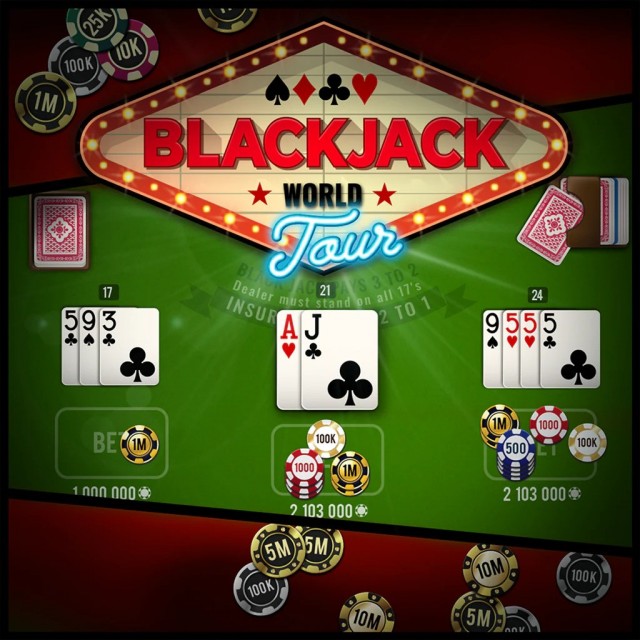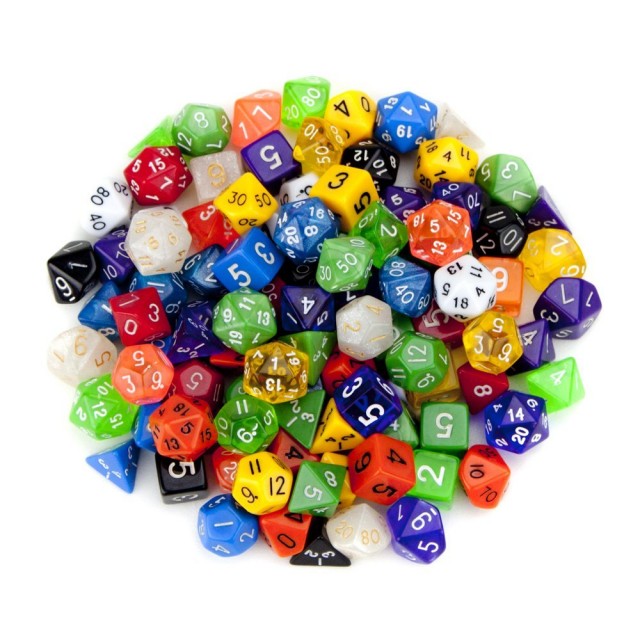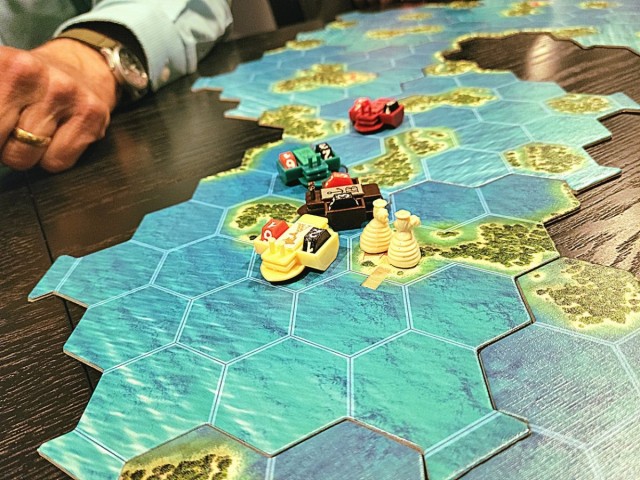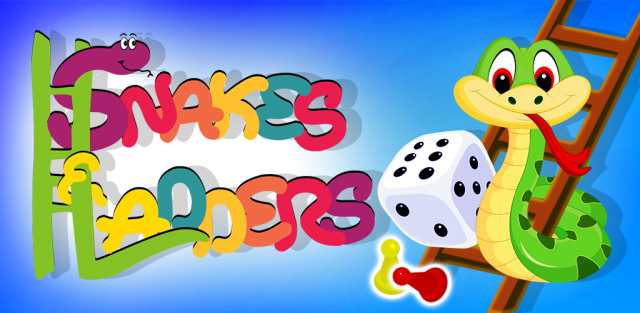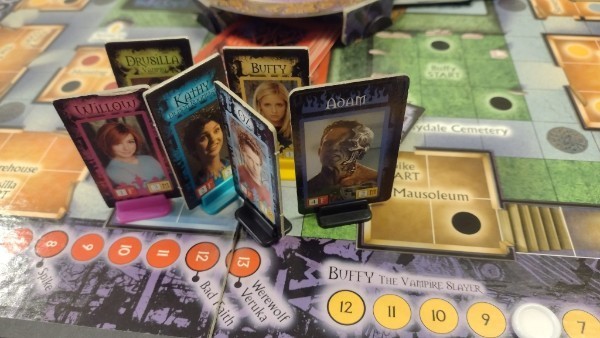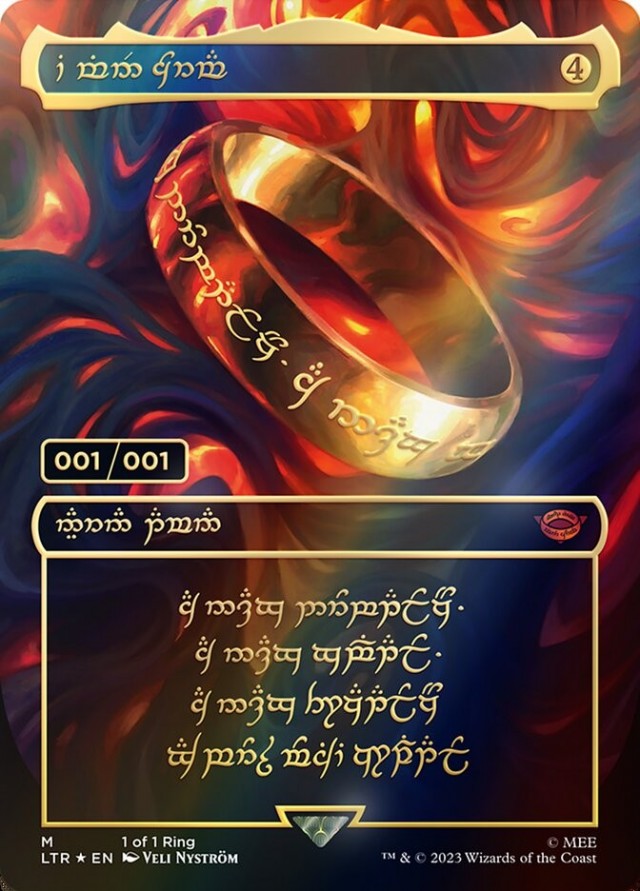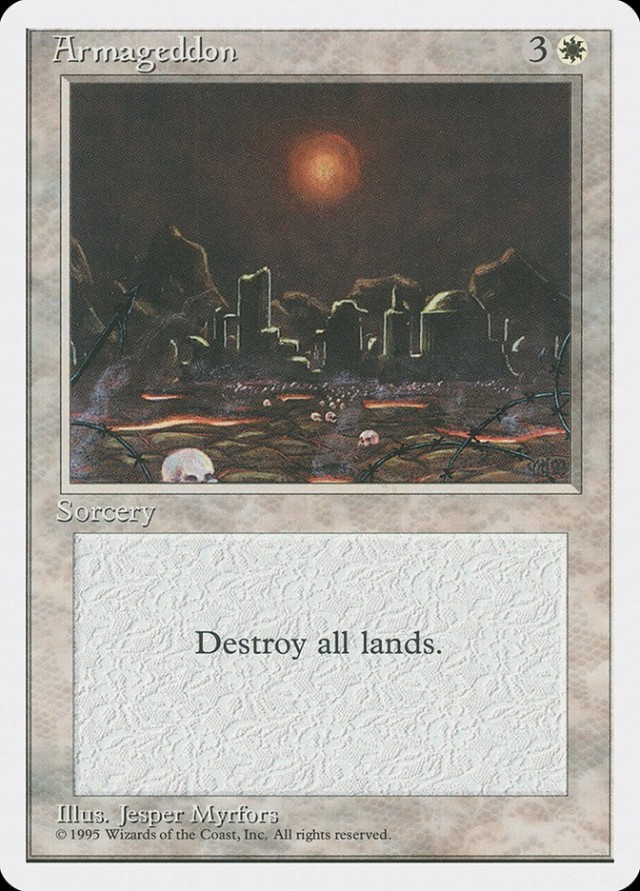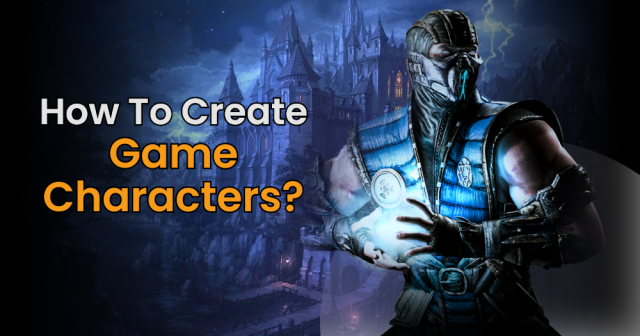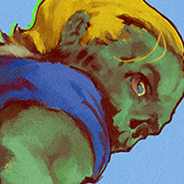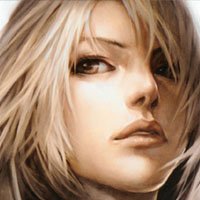A Few Other Big Games: Ka-Bloom
Consider the fate of X-Wing, a game introduced in 2012. The problems with the game were manifest clearly by 2015. The titular ship, the X-Wing, was no longer being used, having been buried in power creep by ships that no longer looked or sounded like anything remotely canonical. The game was a complex morass of meta-thinking and obscurities. The purchasing model was broken beyond belief, requiring the purchase of ships no one wanted in order to gain access to exclusive cards that plugged into the meta. During this nadir in which almost everyone agreed that the game was incontrovertably broken, a trade industry analysis listed it as the top-selling miniatures game, bar none. You could find a regular game of X-Wing happening at nearly every game store in the country.
Fast forward to 2018, the year Fantasy Flight released the rules to X-Wing Second Edition. I’m not sure that a company ever did more work to take seriously the complaints and concerns of a majority of the people who play the game. Those complaints and concerns were a swarming, dizzy cacophony of voices, requiring extra-human calculatory powers to parse for trends and throughlines. It could not have been an easy task. As a result, points values were reset and offloaded to an online algorithm that could be tracked. All the cards that did something-but-a-little-better-in-the-meta were erased, folded into universal types. All the stats for all of the canonical ships were released at once, providing an at-a-glance vision of how everything worked with everything else, easily traceable on a spreadsheet of only a couple of pages. At that point, just last fall, one could make the claim that the game was as fair and balanced as any officially supported tabletop miniatures board game in the genre’s history. It was also, from my perspective, way, way more fun to play. Yet I’ve had very few opportunities to do so. I can’t find a game of it to save my life. Soon after 2E’s release, the cacophony of voices died down. Whole, long-standing forums just stopped being populated by questions, withering like rotten fruit on a vine. And with that, so, too, did the people stop showing up. Is X-Wing dead? Oui, c’est mort.
This is because there never was a game, not one with little ships and boards and cards. The complaining, information asymmetry and unfairness was the game. This makes sense in the way that anything makes sense in the year 2019, for if a game’s to be played fairly or competitively, in ringing, monklike silence, why not burrow more deeply into fairness and competitiveness? Why not play chess competitively? There’s a short answer to this, and that’s that it requires very smart people to play chess competitively. And "smart" is just not how capitalism operates. Capitalism operates on the assumption that even very stupid people can accrue little advantages over time until they leverage themselves into kingships and papacies. The very business model of a company that sells both little toys and rules by which to play those toys must, by necessity, make it likely that even a very stupid person could win a game simply by buying a new rule, or a new toy, or both. But we’ll leave it at that, because it’s not what we came here to talk about.
I promised myself that, in writing up my evolution of understanding in regards to the rules of Warhammer, that I would cap it all off with a quick write-up of what I think could be changed or improved about Warhammer to make it better, in parallel with a write up of other systems I think get it right. A useless task. I’m sure the Mechanicum minds at Games Workshop have clocked the rise and fall of X-Wing and are even now formulating new rules conundrums to stay ahead of the comprehensibility curve, to complicate the meta and serve to make Warhammer one of the many things that makes being teenager a miserable swamp that profits others and fascinates all. This whole post, a post concerning the relative quility of different brands of miniatures wargaming, is a waste of time. Yet I have never let a waking hour go by without exploring that hour's every purchase-hold and imperfection, searching for the gold of wasted moments. I waste my time; it's what I do, it's my ennobling purpose. Here, then, is what’s wrong with Warhammer, and by extension, a few systems that aim to fix it, systems which no-one will ever play with you.
--
1) The lore of Warhammer is like a glistening ambergris of stupidity scooped directly as if from from the bowels of a whale. Let’s get that out of the way right now. “Ambergris is soft, waxy, and so highly fragrant and spicy, that it is largely used in perfumery, in pastiles, precious candles, hair-powders, and pomatum...Who would think, then, that such fine ladies and gentlemen should regale themselves with an essence found in the inglorious bowels of a sick whale! Yet so it is.” I think you could transpose the entire chapter on ambergris found in Melville’s Moby Dick, replacing each instance of “ambergris” with a reference to“Warhammer,” and each instance of “a sick whale” with an instance of “capitalism,” and get a wonderfully resonant result. Such is the fucking beauty of Warhammer’s whole gestalt. And it’s important to note that, while X-Wing’s purpose is ekphrastic (seeking as it does to translate, however well or poorly, the vibe of cinematic art into a similar vibe within the language of gaming) Warhammer’s thrumming, tense and self-cancelling lore derives from its function as a game and from no other source. The bad parts of the game have been enumerated by me already. They’re also obviated, meaning that, for all the reasons listed above and more, they will never, ever change--not all at once-- at risk of self-destruction. Nonetheless, for reference, I’ll list Warhammer’s three most universal problems. These problems are so glaring I won’t even explain why they’re wrong. I will just describe them below and their wrongness will become manifest.
A proclamation, then: it is for these reasons alone that Warhammer may be a game that is not even worth considering, even among those devoted to lounging naked and slathering themselves and their Korn T-shirts with the rank essence of the dying whale.
- Tedious Combat. Combat resolution is tedious, requiring the resolution of several dozen dice filtered through at least three separate dice rolls in order to come to a conclusion, calculable (and to some degree depended upon) as an average before the dice even start rolling.
- Activation Order. Turns are what is commonly referred to as “UGOIGO,” meaning that one army resolves its activation entirely--moving, positioning, dealing damage--before the other can begin even playing the game.
- Plausible Denial of Complexity. There is nothing too complex about rolling one die to save, one to hit, and one to wound. There is nothing too complex about rolling 12 such die. There is nothing too complex about adding or subtracting one to those rolls when standing “wholly within cover.” There is nothing too complex about adding a -2 rend characteristic to some of those models. There is nothing too complex about adding a -1 Rend characteristic to another set of models. There is nothing too complex about having to read text on one individual model that reads, “If the hit roll for an attack made by a Shock Gauntlet is a 6 or more, that attack scores D6 hits rather than 1 as the electrical discharge arcs between targets.” And so on, compounded ad infinitum, in a neoliberal relationship that forever makes the complexity and readability of the rule set the responsibility of the player, rather than of the designer.
2) I will not be considering Warmachine or Hordes in this review. I have read the rules to these, but have not bothered to play with them. In passing, my impression is that the lore and miniatures are worse, the expense only nominally more reasonable, the play functionally as problematic. I will probably never give this a shot. My mind is closed on the subject. In a similar way, I will not be talking about Kill Team, because I view small-team skirmish games as solving problems that are fundamentally different than the problems of larger-scaled games. Upon its initial release, Kill Team was probably the best set of rules that Games Workshop had ever produced. It is also a fair-to-middling game when compared to other, better skirmish games in existence, and it has become precipitously worse as it has been iterated upon with an aim toward product sales.
3) Some adults, in rare instances, stop being teenagers; a few others split the difference. Bret Spivey and Daniel Mersey are among these latter. Both are self-admitted Warhammer refugees, long ago spit out by the churn, who still want to play some sort of game on the weekend. Both have written rules for grand-scale war to that effect, with a few similar attributes. Both intend a rules-lightness, a one-stop shop for all your wargame needs. Both directly respond to a familiarity with Warhammer, directly translating their ideas of turn structure and combat from the ur-System. Where the hilarity of Warhammer’s written content creation derives from its self-seriousness, (“In the grim darkness of the future, there is only war”), Spivey and Mersey sort of take things easy. Their books are full of gentle chuckles, the stuff of dads.
4) Brent Spivey’s Havoc is the more complicated of the two systems mentioned above. He solves for combat resolution by allowing a certain number of six-sided dice to be rolled as advantages, but never allowing more than three to be counted in the final result (with the important exception of attacks). He solves for UGOIGO by playing within the formula; activations are threaded from opponent to opponent, yet he allows an opponent in good formation to activate up to six models on their turn, thus turning a thoughtless rule in Warhammer into an earned but limited advantage. It’s a very clever and tactical system. Havok is full of such smart systems which may, in the end, be too much. He improves on “plausible denial of complexity”--let’s just start calling it PDOC, shall we?--without really solving for it. He can’t seem to resist writing rules for things that don’t really need rules. There are rules for Scuttling and Take-A-Knee and Reloading. There are rules for being “engaged” in melee that I’m not sure I quite understand because Spivey spends more time (quite jovially) explaining why the rule exists than how it exists. There are a lot of unintuitive designations like your MAD number and your RAT number and your corresponding RDF number. There are particular rules for “Good Show” or “Poor Form” applied as they are to the “Gentlemen Gamer (or Lady Gamer, as dictated by the player’s gender)” which are meant to be a flavorful little garnish but which end up seeming like a bit much.
5) On the other hand, Daniel Mersey’s rules for Dragon Rampant are sleek and efficiently written while still managing an edge (a very soft edge) of humor. The unit characteristics are called normal things like “Shoot” and “Armour” and “Courage”; there aren't too many of them, so no need to save space by acronymizing everything. He solves for UGOIGO using a system I have seen work very successfully in smaller skirmish games like Song of Blades and Heroes. UGO...ahem, excuse me...you go, urging your units forward with activation tests based on their respective attribute until one of them fails, at which point the turn reverts to your opponent. It’s a fun, tense activation system that works surprisingly well with larger armies. Attacks are always the same; 12 dice if the unit is at full Strength, and six if at half-Strength, with Strength always corresponding to wounds. There are a lot of 6-or-12 Strength things on the board, which makes it all quite readable, very neat and tidy. So, then does he solve for combat tedium? I’m still not sure. Warhammer’s tedium derives from its complication. I hate to say it, but Mersey’s system may be too simple. In play, I found myself not caring quite enough about the resolutions. Still, between Dragon Rampant and Havoc, it’s my preferred system by a small margin.
6) Speaking of Andrea Sfigoli, he’s among my favorite designers, having developed both A Song of Blades and Heroes and Four Against Darkness. Ten years ago, A Song of Blades and Heroes (henceforth, SoBaH) rewrote the rules for tense simplicity in a miniatures wargame, having revived the small-army skirmish genre from its complex heyday in the 90’s. Since then, he’s tried his hand at various iterations of large-scale war games using some iteration of the SoBaH system, to limited success. The latest of these is the less-than-creatively titled Of Armies and Hordes. Like his previous entry into this genre, Of Gods and Monsters (featuring wars in which the Gods participate in Mortal battles in a way that belies their own nature in the source material), it’s a bit of a mixed bag. For one thing, Sfigoli is intensely interested in movement trays as part of the horde-army experience, and spends many precious pages at the start of Of Armies and Hordes comparing and contrasting movement trays made out of old AOL CD-Roms vs. square formation trays vs “cloud trays.” The reader is strongly urged to assemble an entire host of each of these to play the game, as each type of formation provides separate bonuses. (There is a small part of me that geeks out over different martial formations, but not enough that I would go out in search of abandoned AOL CD-Roms. I’ve spent enough time in the 90’s trying to avoid them.) In addition to formations, Of Armies and Hordes features movement Areas rather than movement-by-inches. These Areas have a Stacking Limit, and this is how pathways become blocked and movement limited. I would have to see how this plays out, but as written, it feels like this would be a lot to track, and would be better suited to a chit-and-counter boardgame. In short, Sfigoli’s efforts here tend not to solve for PDOC. Nevertheless, the Activation system seems just as workable as in SoBaH, and equal in complexity to Dragon Rampant, above, except that Sfigoli has a real fondness for plus-something modifiers, basing all Attacks and Defenses around their application, such that everyone is always clearing away the little occlusions of the game state by performing equally small arithmetic operations. This is fertile ground for PDOC in the same way an unwashed bathtub is fertile ground for white scum.
7) My repeated apologies, but, as we know, all of this is immaterial. If you have been soaking yourself for days in pungent ambergris, allowing it to get all up in your ears and nose and mouth and inside of your Rick-and-Morty-branded underwear, suddenly being told to take a bath and have some cheese and crackers and an apple is going to be a bit of a let down. And this is the main thing about all of the games mentioned above. In the name of efficiency and readability, all of the things in the game are all like each other. This is a very logical solution to everything, of course. In general, a Chaos Lord on Manticore and a Thundertusk Beastrider and a Sylvaneth Spirit of Durthu all have the same profile when you squint at them. Yet The Spirit of Durthu’s Guardian Sword “does an extra D3 Attacks when it is near a Sylvaneth Wildwood” while the Chaos Lord’s attack “does exactly 3 Damage after it has performed a Charge,” and if you can’t see the difference with that, or don’t see what purpose the distinction could possibly contain, then obviously having all Large or Bellicose or Whatever units having all the same exact profile is going to be a perfectly logical and workable solution for you, and the rich, forebrain-drenching aroma of ambergris will have to be something you go to the grave not knowing anything about. Good for you. Have fun playing your game all by yourself. Have some cheese and crackers. But first, a couple more games to in assist our triangulations.
8) How about Star Wars: Legion? It is steeped in the lore and history of one of our most esteemed franchises, which has slowly evolved from the morass of Big Macs and Quarter Pounders on the menu of American Dumb Stuff to something more like an Apple-Smoked Signature Selection. As of this writing, it features AT-STs that behave like AT-STs, Speeder bikes that pew-pew through terrain with interesting mechanisms that see them accidentally ka-blooming into trees, and Vaders that vwoom their lightsabers while choking out their friends and enemies. Legion has sort-of solved for PDOC by using dedicated dice and a fixed-but-abundant set of traits, it has sort-of solved for Activation issues by using a very fun chit-pulling system, and it has sort-of solved for combat tedium through the use of those selfsame dice, though it has the frequent problem many specialized-dice FFG systems have, which is that you have to sort through the dice results as if they were tea leaves. Balance seems to be a small issue, with troops being favored over vehicles and large units. Typical of FFG games, Line-of-Sight becomes a tesseract of complicated folding and unfolding is-ness. It has problems, but its problems are less than those of Warhammer, and its IP rings out more widely. And all but a very select few people hate it with the passion of Leia watching her beloved Alderaan go ka-bloom. Absolutely. Hate it. With the hatred a cat shows for someone who has petted it too much. I have no explanation for it, except for the fact that it’s all just a bunch of expensive plastic junk you never needed anyway. Then again, so is all of it; Warhammer, the mortgage you’re paying on your house; your health care system, the metric ton of waterway-clogging non-edible shit that gets bought every year on Valentine’s Day. All of it. I honestly don’t know why Star Wars: Legion is getting partitioned an extra helping of ass-kicks. It is a mystery.
9) This leads me (and you, my friend) to clear waters. Have you heard the Good News about One Page Rules? Its author, Gaetano Ferrara, has done us all the invaluable service of reducing Warhammer--all of Warhammer, past and present, faction by faction--into its most discrete constituent parts. His first miracle was not to get sued by Games Workshop, for his “Battle-Brothers” of the “GrimDark Future” go forth in service of the “immortal God-King” in battle against the “Soul-Snatchers,” “viscous alients that infect enemies to fight for them,” while over in the “Age of Fantasy” the “Eternal Wardens”...okay, you get the picture. It all looks very cheap, and that’s fine, because it’s all absolutely free (though he does maintain a healthy Patreon account, membership through which gives one access to the formula he uses to produce the stats of his units). His support for the system is absolutely heroic. It solves for everything by taking the most direct route there. As with SoBaH, everything has either a Quality or a Defense against which it rolls, and so combat tedium is virtually nonexistent. Turns are simply interlaced without any fancy twists, which works fine. PDOC is solved through a thorough listing of traits which roughly taxonomize most of what you can do in Warhammer, with each team getting its own list of special traits, usually only a few items long. Per the name, the complete rules fit on a sheet of paper, with each faction’s stats fitting on a separate sheet. That’s it. It loses no flavor, as long as you use your--I mean to say, Games Workshop’s--imagination. Games do not go over an hour, and still have some tactical punch. Worried that just one person couldn’t possibly keep the system legitimately balanced? It has a small but vociferous community--teenaged adults, all of them, burned out on the GW churn-- who all contribute to the upkeep of the system as if it were open-source (Ferrara tends to go by the online nom-de-guerre of “onepageanon”), such that a distributed intelligence has smoothed out many kinks in the system. I do not hesitate to say it is the best large-scale Fantasy ruleset there is, and I reserve the right to judge you for never trying it. Games
Games How to resolve AdBlock issue?
How to resolve AdBlock issue? 